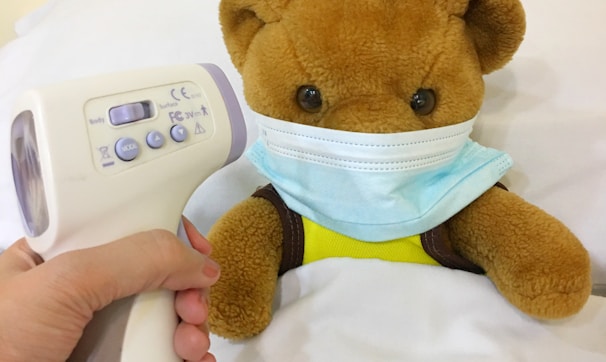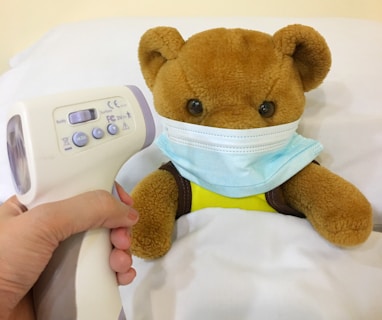Revolutionizing Healthcare: The Impact of Wearables and Smart Devices
FEATUREDINNOVATION


In recent years, healthcare has come a long way, with new technologies and innovations constantly emerging to revolutionize the way we approach healthcare. Wearable devices and smart medical devices, for example, are quickly gaining popularity as they provide convenient, efficient, and cost-effective solutions to many healthcare problems. These devices are providing new and innovative ways to manage our health and wellness, from continuous monitoring of vital signs to personalized health data analysis. In this article, we'll look at the impact of wearables and smart devices on the healthcare industry, as well as how they're changing the way we think about healthcare. Whether you are a healthcare professional or a patient, understanding the benefits and challenges of these technologies and how they can help us live healthier lives is critical.
Wearable devices and smart medical devices have grown in popularity in recent years, providing new and innovative ways to track and monitor various health metrics. From fitness trackers to smartwatches, these devices have become commonplace on many people's wrists, providing real-time health data and personalized health analysis. In the medical field, these devices have the potential to revolutionize the way we approach healthcare by providing more efficient and effective solutions to many healthcare problems.
Wearable and Smart Device Applications in Healthcare
Wearable and smart medical devices have numerous applications in the healthcare industry. Among the most common applications are:
Continuous Monitoring: Wearables and smart devices can be used to continuously monitor various health metrics such as heart rate, blood pressure, and activity levels. This allows for the early detection of any health issues and can aid in the prevention of more serious health problems from developing.
Personalized Health Data Analysis: These devices can collect a large amount of information about a person's health and wellness, such as activity levels, sleep patterns, and nutrition information. This data can then be analyzed to provide personalized health insights and recommendations, allowing individuals to make more informed health and wellness decisions.
Chronic Condition Management: Wearables and smart devices can be especially beneficial for people who have chronic conditions like diabetes or heart disease. Continuous glucose monitoring devices, for example, can provide real-time glucose levels and alert users to any changes that may necessitate medical attention.
Telemedicine: Telemedicine is the use of telecommunication technologies to provide medical care from a remote location. Wearables and smart devices can be used in telemedicine consultations, allowing medical professionals to remotely monitor patients' health and wellness and provide medical advice and support.
Mental Health: Wearable and smart medical devices are being used to assist individuals in managing mental health conditions such as anxiety and depression. These devices can monitor and track mood, provide real-time data, and assist individuals in better managing their mental health and wellness.
Pain Management: Wearable devices are being used to assist people in managing pain, including chronic pain conditions. These devices can provide real-time data on pain levels and can be programmed to deliver targeted pain relief when necessary.
Women's Health: Wearable devices and smart medical devices are being used to assist women in managing their reproductive and menstrual health. These devices can monitor and track menstrual cycles, provide real-time data, and help women manage their reproductive health and wellness more effectively.
Elder Care: Wearable devices and smart medical devices are being used to help elderly people maintain their independence while also managing their health and wellness. These devices can provide real-time monitoring, alert people in the event of an emergency, and help to ensure the safety and well-being of the elderly.
These are just a few of the many applications in healthcare for wearable devices and smart medical devices. These technologies are assisting in revolutionizing the way we approach healthcare by providing more efficient and effective solutions to a wide range of healthcare issues.
Wearables and Smart Devices in Healthcare Examples
There are an increasing number of wearable devices and smart medical devices on the market today, each with its own set of features and benefits. Among the most popular devices are:
Fitbit: Fitbit is one of the most well-known wearables on the market, offering a variety of features such as fitness tracking, heart rate monitoring, and sleep tracking. Fitbit devices can be used to track physical activity levels, provide insights into sleep patterns, and provide personalized health recommendations.
Apple Watch: The Apple Watch is a popular smartwatch with a variety of features such as fitness tracking, heart rate monitoring, and fall detection. The Apple Watch can also be used for telemedicine consultations and can alert users to any changes in their health that may necessitate medical attention.
Continuous Glucose Monitoring Devices: Continuous glucose monitoring devices are intended for diabetics. These devices are designed to be worn continuously and provide real-time glucose levels, alerting users to any changes that may necessitate medical attention.
Smart Pill Bottles: Smart pill bottles are intended to assist people in managing their medication regimen. These bottles can track pill usage and send reminders when medication is due. This assists individuals in sticking to their medication regimen and taking their medication as directed.
Body Composition Analyzers: Body composition analyzers are wearable devices that can measure body fat, muscle mass, and other body composition metrics. Individuals can use these devices to gain valuable insights into their body composition and make more informed decisions about their health and wellness.
Wearable Heart Monitors: These are devices that can continuously monitor your heart rate and activity levels. These devices can detect changes in heart activity and help to prevent more serious heart problems from developing.
Smart Insoles: Wearable devices that monitor and track foot health, such as temperature, pressure, and gait, are known as smart insoles. Individuals with foot problems may find these devices especially helpful in managing their foot health and preventing more serious problems from developing.
Wearable Sleep Monitors: These are devices that track and monitor sleep patterns, such as duration, quality, and efficiency. Individuals can use these devices to gain valuable insights into their sleep patterns and make more informed decisions about their sleep health.
Wearable Fall Detectors: Wearable fall detectors are devices that detect and alert people if they fall. These devices can be especially beneficial to the elderly and those with mobility issues, helping to ensure their safety and well-being.
Smart Hearing Aids: Smart hearing aids are wearable devices that can be programmed to improve hearing and provide personalized audio amplification. These devices can be especially beneficial for people who have hearing loss, helping to improve their quality of life and ability to communicate effectively.
These are just a few examples of the numerous wearable and smart medical devices on the market today. The healthcare industry is rapidly evolving, and we can expect even more exciting developments in the near future.
Upcoming Devices in the Wearables and Smart Devices Market
The market for wearable devices and smart medical devices is rapidly expanding, with new and innovative devices being developed on a regular basis. Among the most exciting upcoming devices are:
Smart Contact Lenses: Smart contact lenses that can continuously monitor glucose levels in diabetics are being developed. These lenses have the potential to transform diabetes management by providing real-time glucose data without the need for frequent finger prick tests.
Smart Inhalers: Smart inhalers are being developed to monitor and track medication usage, providing real-time data on medication adherence and effectiveness. These devices have the potential to improve the management of chronic respiratory conditions such as asthma and COPD.
Smart Clothing: Smart clothing is a new wearable device category that incorporates sensors and technology into clothing items. These devices are capable of tracking and monitoring a variety of health metrics, including heart rate, physical activity, and sleep patterns. Smart clothing has the potential to offer people a more convenient and less intrusive way to track their health and wellness.
Implantable Devices: Implantable devices are wearable devices that are designed to be surgically implanted into the body. These devices can monitor and track a variety of health metrics, such as heart rate, blood pressure, and glucose levels. In comparison to other wearable devices, implantable devices have the potential to provide a more long-term and continuous solution for monitoring health and wellness.
Smart Wound Care Devices: Smart wound care devices that can track and monitor the healing process of wounds are being developed. These devices can provide real-time data on wound healing progress, allowing healthcare professionals to better manage wound care and improve patient outcomes.
Smart stethoscopes are being developed to track and monitor heart and lung sounds, providing real-time information about cardiovascular and respiratory health. These devices have the potential to improve the accuracy and efficiency of heart and lung disease diagnosis and treatment.
Smart Surgical Instruments: Smart surgical instruments that can track and monitor the performance of surgical procedures are being developed. These devices can provide real-time data on surgical outcomes, assisting healthcare professionals in improving surgical procedures and patient outcomes.
Conclusion
Wearable and smart medical devices have the potential to change the way we approach healthcare by providing more efficient and effective solutions to a wide range of healthcare issues. These technologies are providing new and innovative ways to manage our health and wellness, from continuous monitoring of vital signs to personalized health data analysis. As the market expands, we can expect to see even more exciting developments in the wearable devices and smart medical devices market in the future. It is critical to stay informed about these technologies and how they can help you live a healthier life, whether you are a healthcare professional or a patient.
